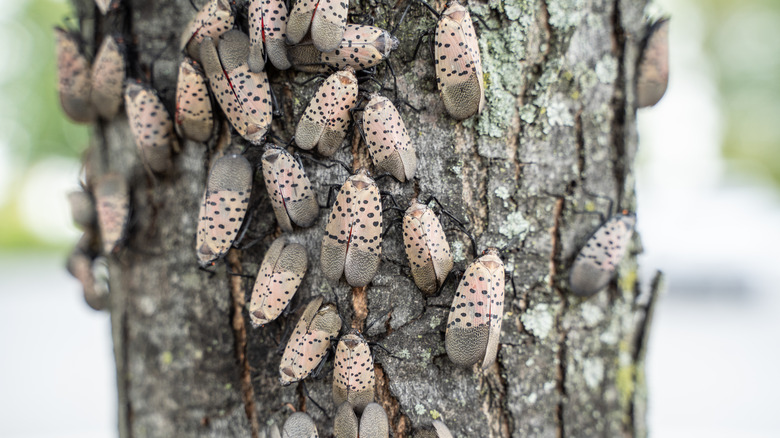Use This Easy Hack To Get Rid Of Invasive Spotted Lanternflies
Getting rid of spotted lanternflies in your garden can be a challenging process, especially if you want to maintain the quality of your trees and plants. However, one easy hack by IntergrativeEcology on YouTube could help you trap these pests in no time using a plastic bottle. Although it may seem like a bizarre item to use for such an issue, it works surprisingly well. Who would think such a simple item could work such magic?
Not only does this hack require minimal fuss and effort, but it's also completely free. This makes it the perfect solution if you're in a rush and don't have any appropriate products on hand to remove these annoying pests. It's also beneficial for the planet, as it's more of a natural method versus using pesticides to solve the issue. But how exactly should you use the plastic bottle? Below, we'll break down the process into several steps so you can rid your garden of pests.
Use the opening of the bottle
For this hack, you'll need an empty water bottle with the cap off. To begin the process, simply place the bottle on top of the lanternfly, as if you were going to trap it, but not all the way down so it touches your plant — like you're hovering above it. Repeat the process above all the spotted lanternflies within your reach until you manage to get rid of them all.
How does the bottle work? As it turns out, the lanternflies push themselves upwards if they feel a threat, in this case, the approaching water bottle. As a result, it's much easier to capture them. Now, you should be left with a pest-free plant or tree. However, some may be harder to reach if they are high up your trees, and you don't want to put your own safety at risk.
Lanternflies are particularly attracted to trees such as black walnut, apple, oak, maple, sycamore, pine, and white ash trees, among many others, as well as various fruits. So, if you have any of these in your garden, make sure to check them thoroughly so you can quickly nip the infestation in the bud. While this is great for tackling smaller infestations, it may not be the best solution for a larger one.
